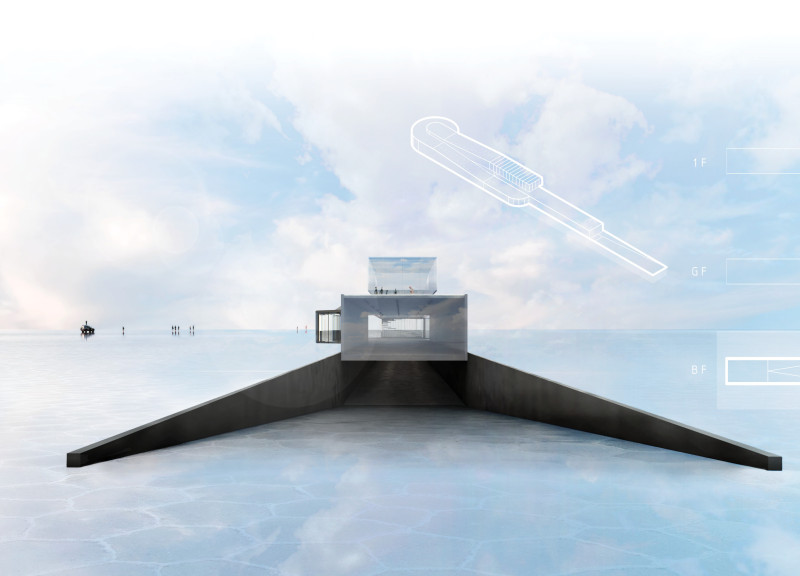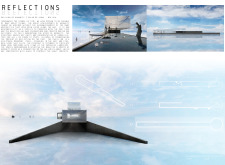5 key facts about this project
The Pavilion of Humanity is located in the vast Salar de Uyuni, Bolivia. It serves as a space for reflection and education, focusing on the story of human achievements alongside its challenges. The design reflects a deep understanding of the dual nature of human experience, allowing visitors to explore the complex history that shapes our lives. Set against the unique backdrop of the salt flats, the pavilion encourages contemplation and engagement with its themes.
Spatial Organization
The Pavilion features long corridors that promote movement and interaction among visitors. Above ground, the galleries are designed to invite natural light, creating an open and welcoming atmosphere. Meanwhile, the underground areas delve into the negative elements of humanity. This clear separation of spaces allows people to navigate through contrasting experiences. As they move from the darker underground exhibits to the lighter galleries above, visitors can reflect on the relationship between these themes.
Materiality
Material choices play a significant role in the pavilion’s design. The upper galleries are made primarily of glass, which not only enhances visibility but also symbolizes the intention for openness in discussing human experiences. The clear walls allow for views of the stunning landscape, connecting the pavilion to its surroundings. In contrast, the heavy concrete used in the underground spaces portrays the weight of historical adversities. This pairing of materials emphasizes the different aspects of human experience, providing a textured narrative within the structure.
Geographical Context
Located in the Uyuni salt flats, the Pavilion of Humanity benefits from its geographical setting. The wide, reflective surfaces of the salt flats enhance the visitor experience, linking the natural environment to the themes of the pavilion. The landscape serves as a canvas that interacts with the architectural form, creating a cohesive relationship between the built space and the natural world.
The overall design of the pavilion showcases a blend of light and heavy elements. The combination of airy glass above and solid concrete below reflects the contrasting themes of hope and struggle. This balance invites visitors to engage with the space, encouraging them to reflect on the narratives that define humanity over time.



















































